Australia So Much to See
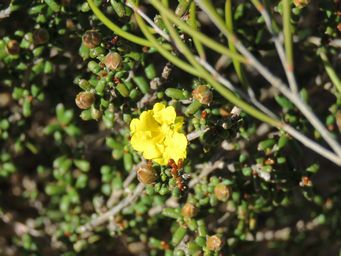
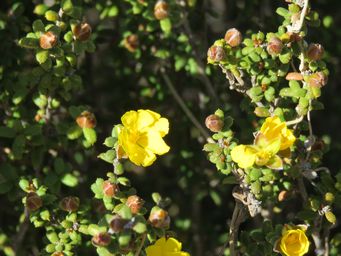
Hibbertia pachyphylla 2004, Thick-leaved Guinea Flower. Priority 3 flora.
Yellow, five petals semi split. Stamens
turned except one row which are upright. Foliage short plump succulent stippled oval leaves with a downward pointing spine from the
rounded tip
Hyden Norseman Road (Breakaways and Grevillea Hill), Dundas shire, Goldfields region, Western Australia. Found in a limited area of the Dundas shire close to and just with the Kondinin shire, and a little further south into the Lake Grace shire within the Frank Hann national park in the Wheatbelt, and a site further north near Coolgardie in the Goldfields.
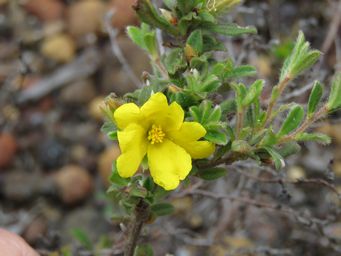
Hibbertia pilosa, Hairy Guinea Flower
Small yellow Hibbertia flowers of five semi-split petals, stamens darker than petals, being toward
orange. Leaves oval to a tapered tip and hairy.
October
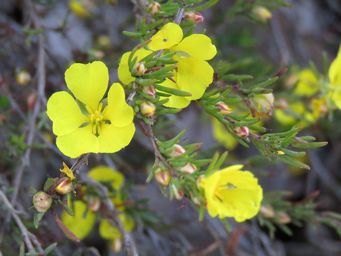
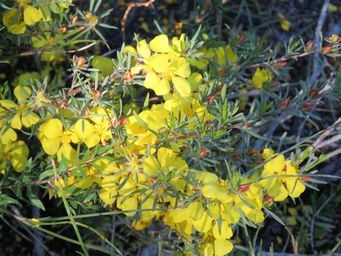
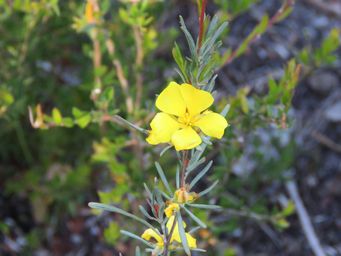
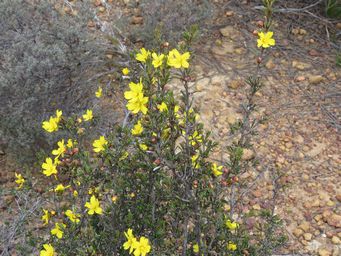
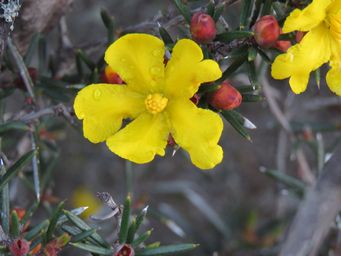
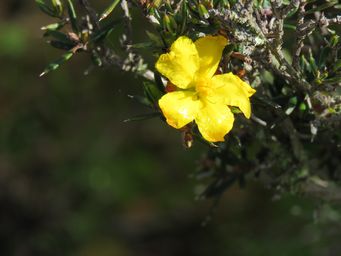
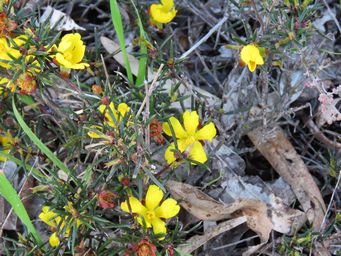
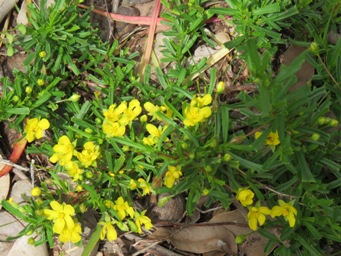
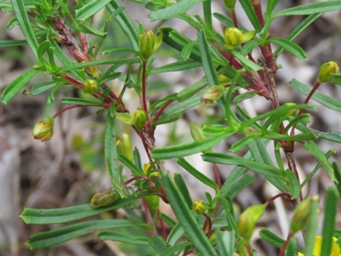
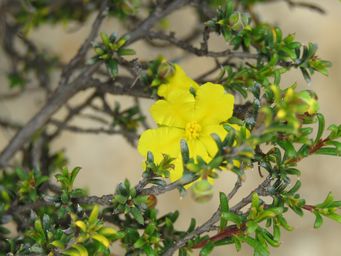
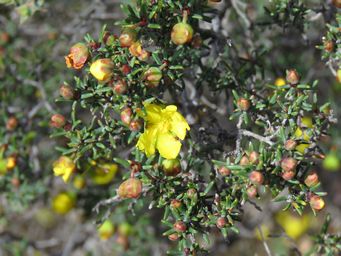
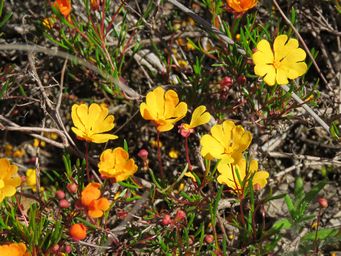
Hibbertia stellaris, Orange Stars, Star Guinea Flower
Varying from yellow to bright orange, even on the same bush, these Hibbertias
have a smooth flat flower with deep divisions and a line down the centre of each of the five petals, giving a more daisy-like appearance. Low growing shrubs are domes of coloured flowers, almost obscuring the foliage which is slender and tubular, with these leaves curving
in all directions.
October
Tonebridge (Boyup Brook shire), South West region, Western Australia. It occurs west of
a line from Leeman to Albany, covering the Perth, South West regions, the lower Great Southern, and the coastal Wheatbelt north of
Perth. Hibbertia stellaris favours winter wet and swampy areas.
Yellow five petalled flowers with a slight indent at the tip, with petals set apart with a gap
between them. There are eleven stamens joined in three groups of three plus two free. Two of each group of three turn
outwards, with the third together with the two ungrouped stamens remaining upright. A somewhat sprawling shrub which can
reach to sixty centimetres, so is relatively low growing. Foliage consists of narrow cylindrical leaves which terminate in a
blunt tip.
November
Hibbertia pungens, Prickly Guinea-flower, Pungent Guinea Flower, Pungent Hibbertia.
Yellow, five petals semi split, with a tight cluster
of thick anthers. Foliage consist of stiff straight narrow leaves that terminate in a sharp spine. Shrubs may reach two metres
in height.
August
Tarin Rock, Dumbleyung shire, and Konnongorring, Goomalling shire, Wheatbelt region, Western
Australia.
Hibbertia rostellata, Rostellate Guinea-flower, Honey-bush, Beaked Guinea-flower (rostellate meaning beaked).
Yellow, five petals
semi split, with around fifteen stamens with thick anthers, tightly packed. Foliage is stiff narrow leaves curved down at the
tip and terminating in a sharp spike.
August
Merredin in the Wheatbelt, and Bunjil in the Perenjori shire in the Mid West region.